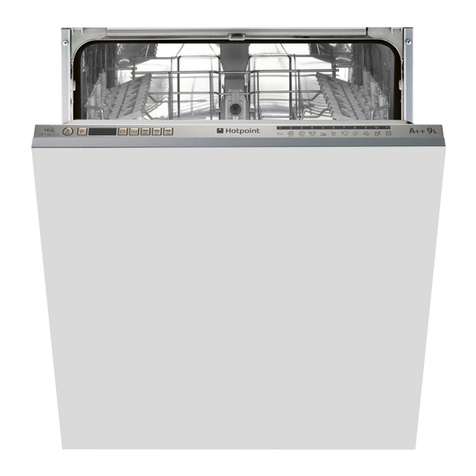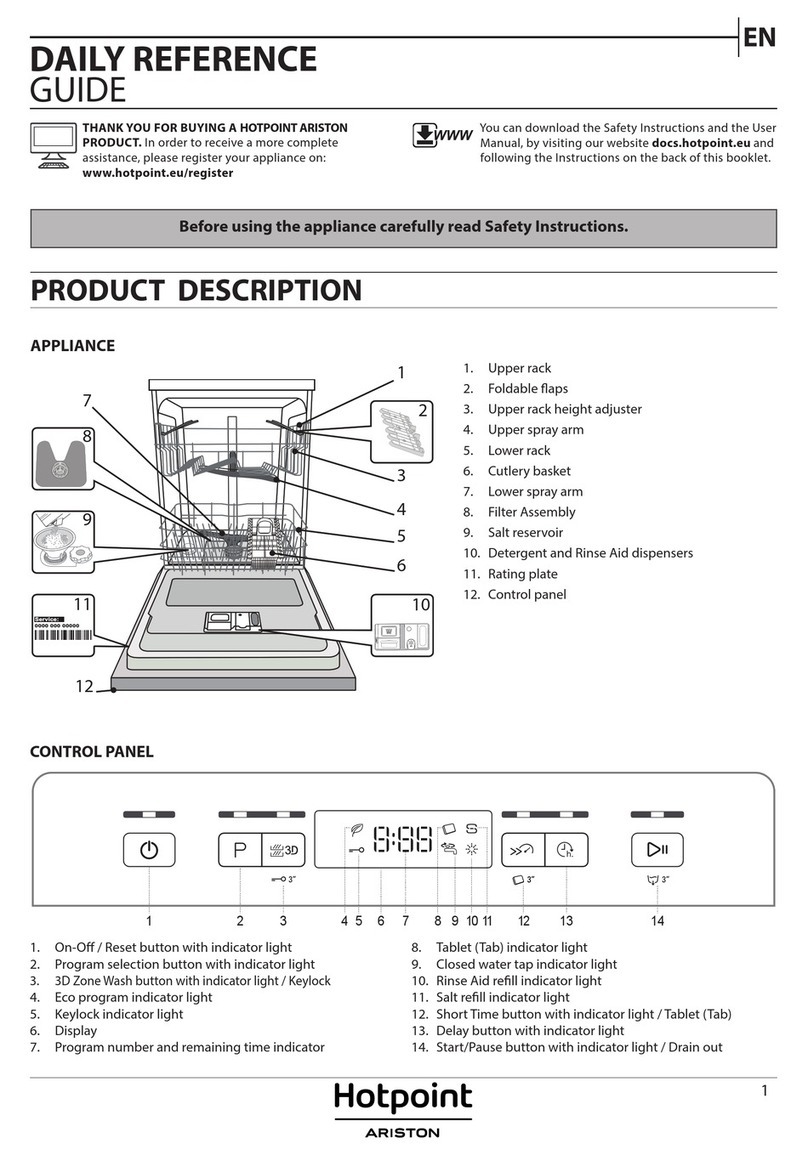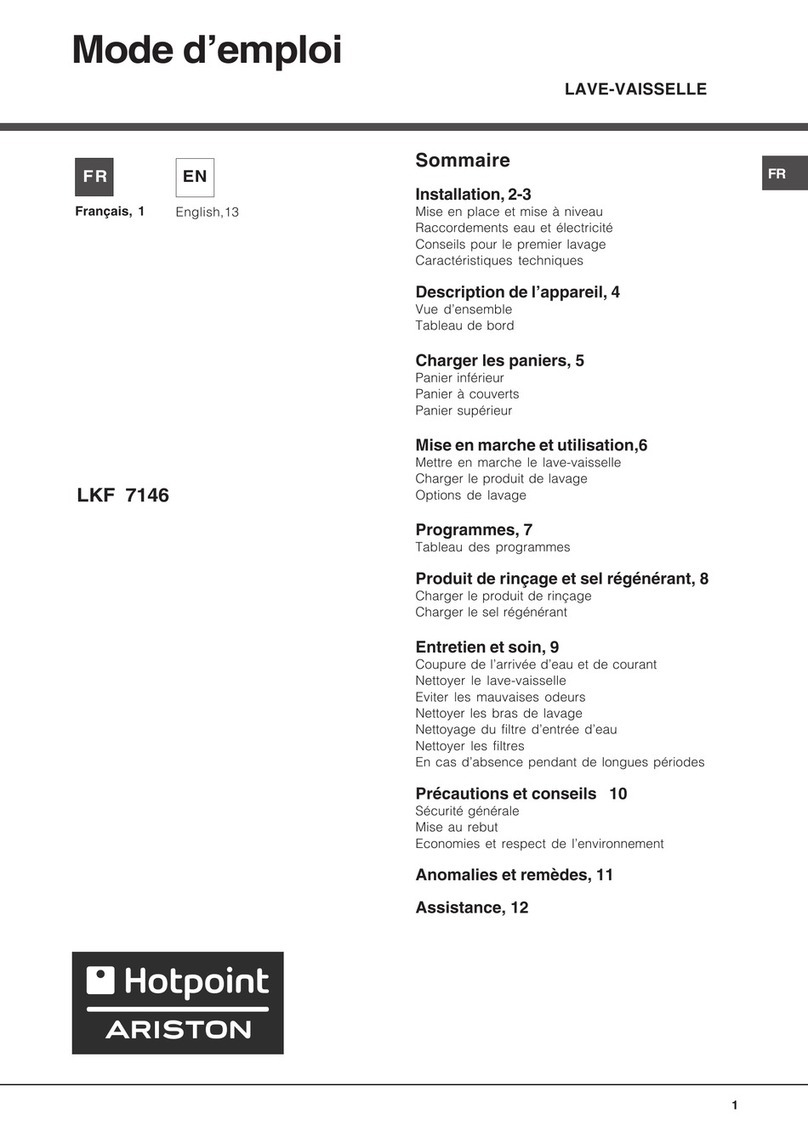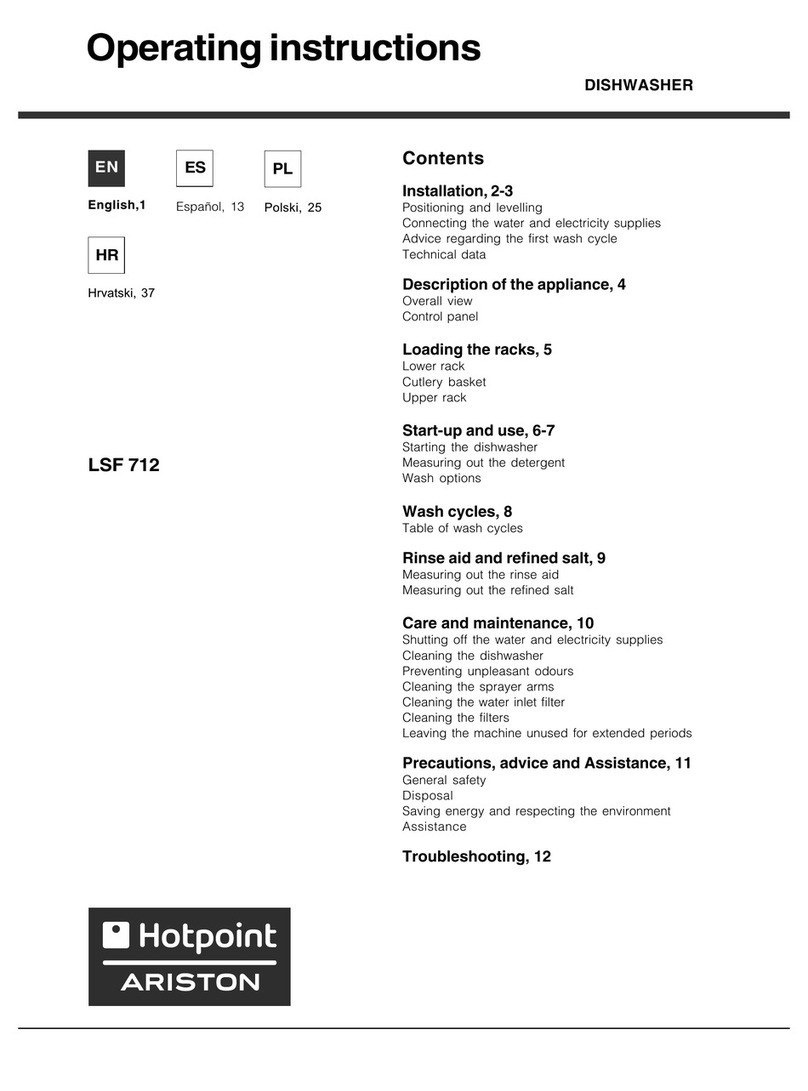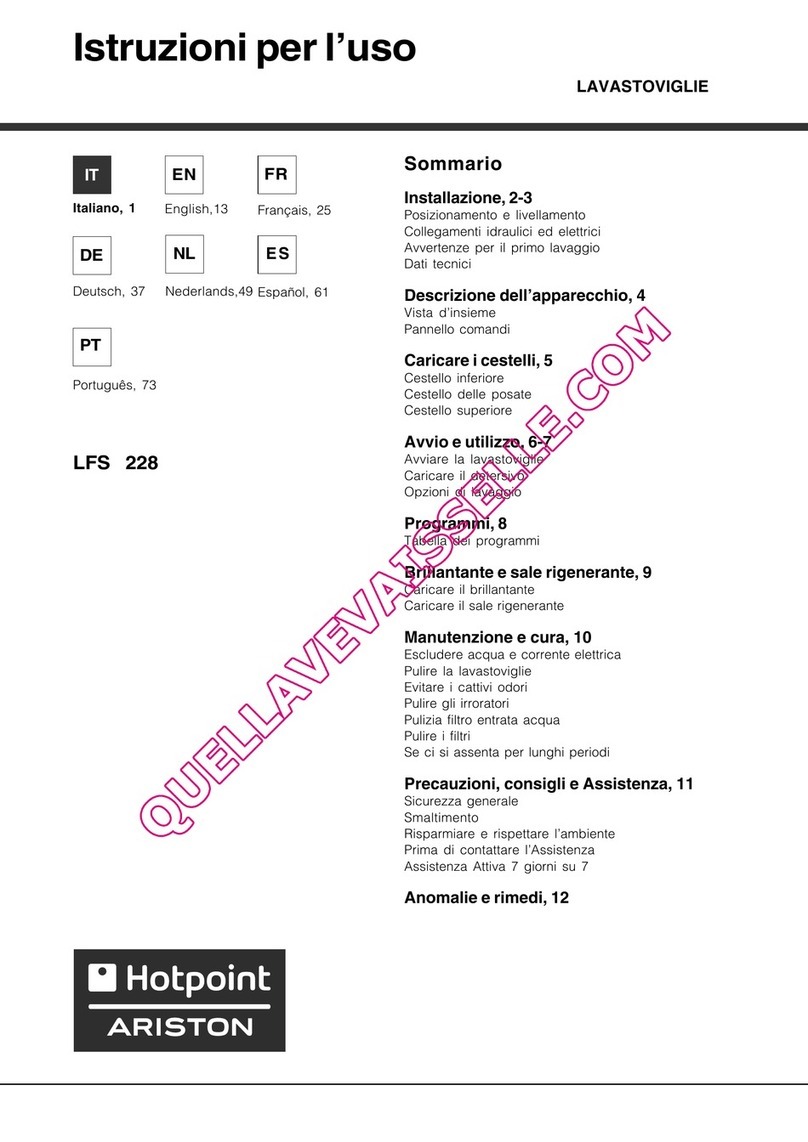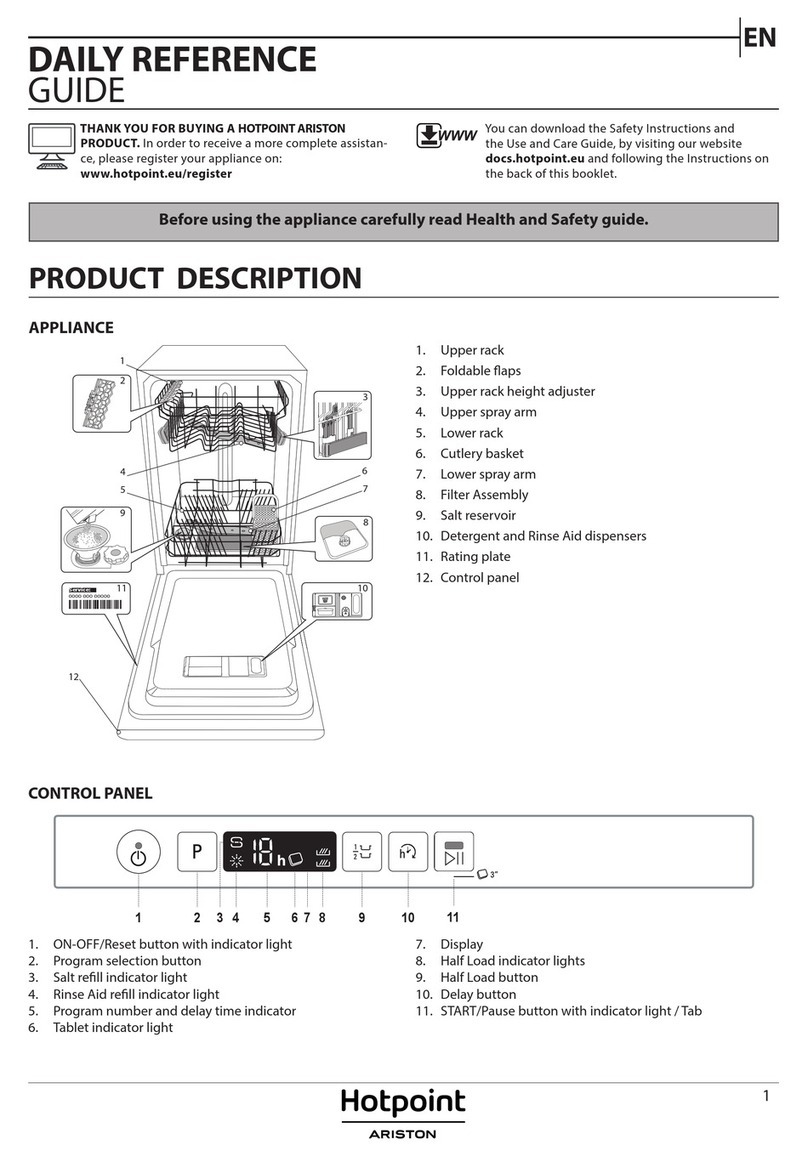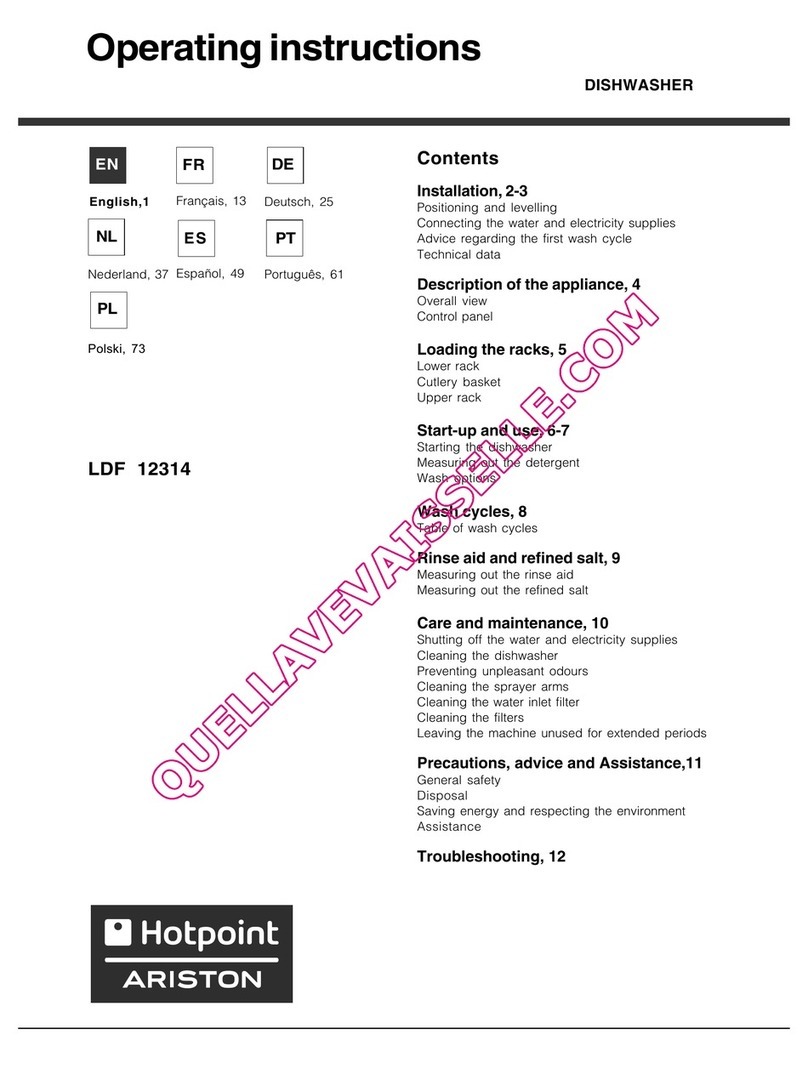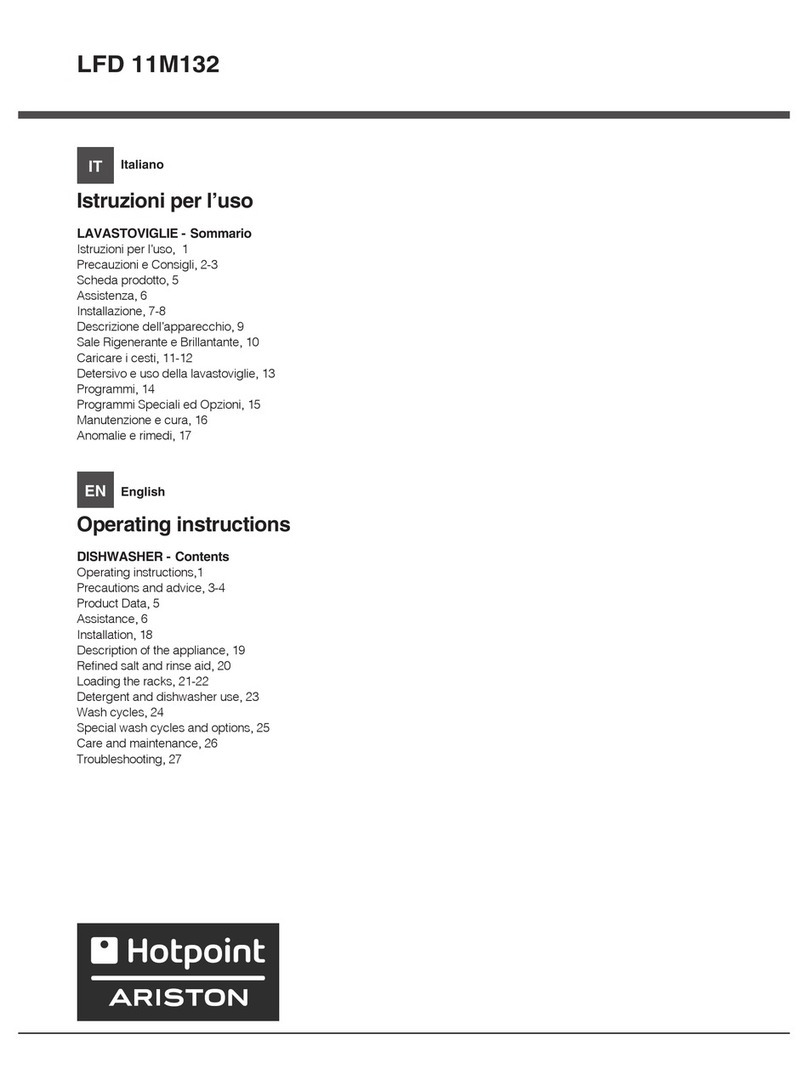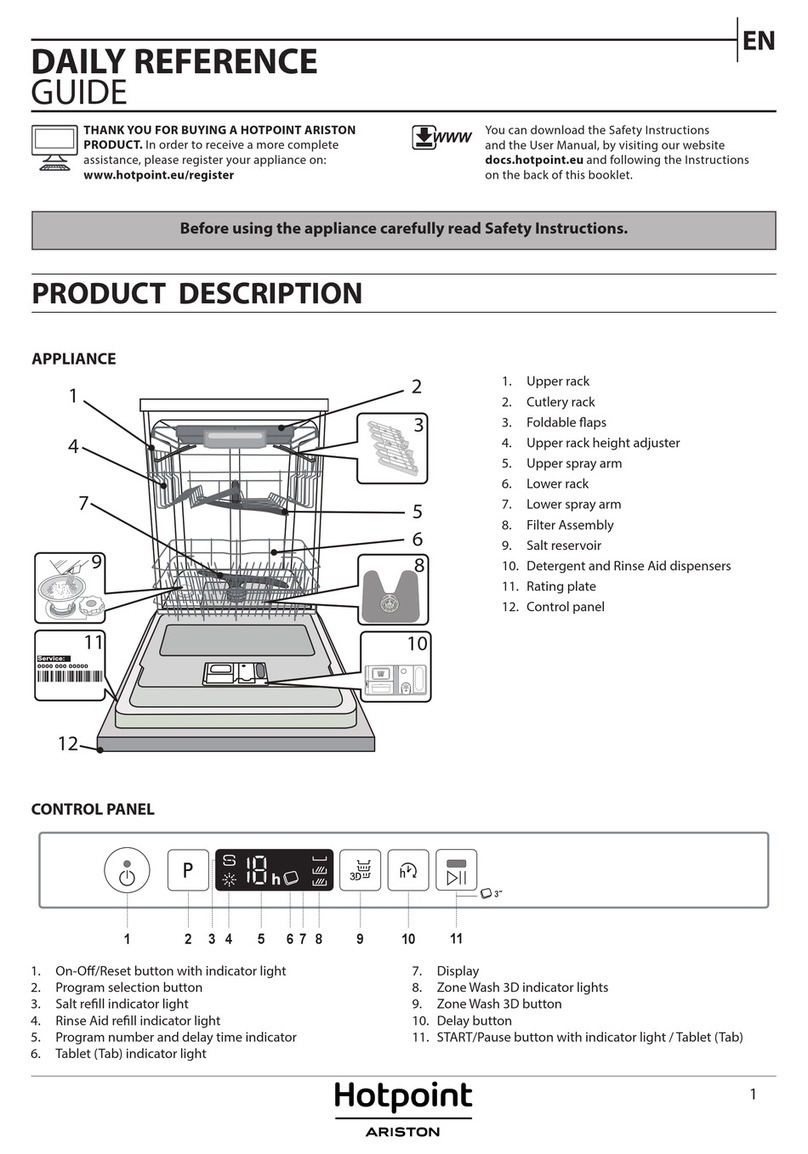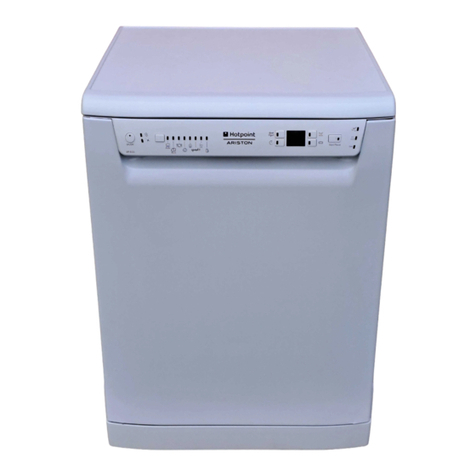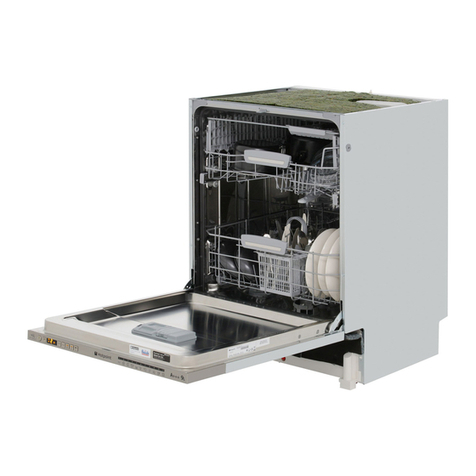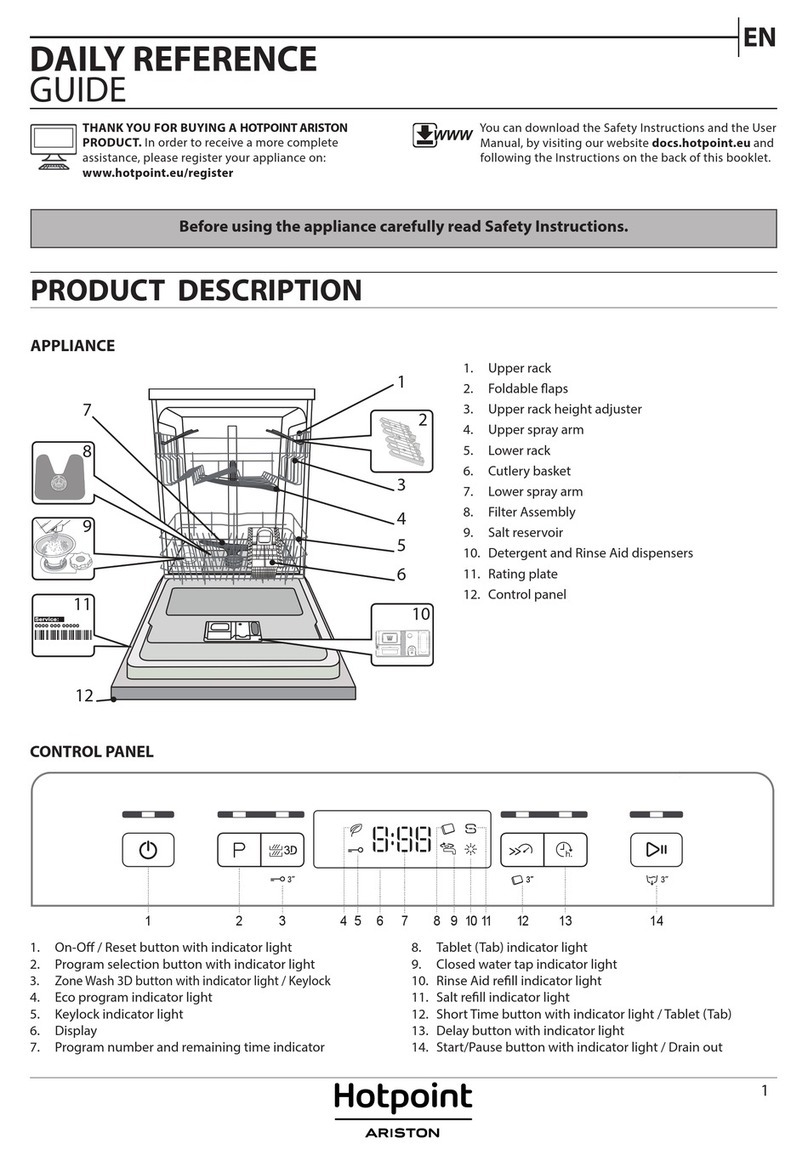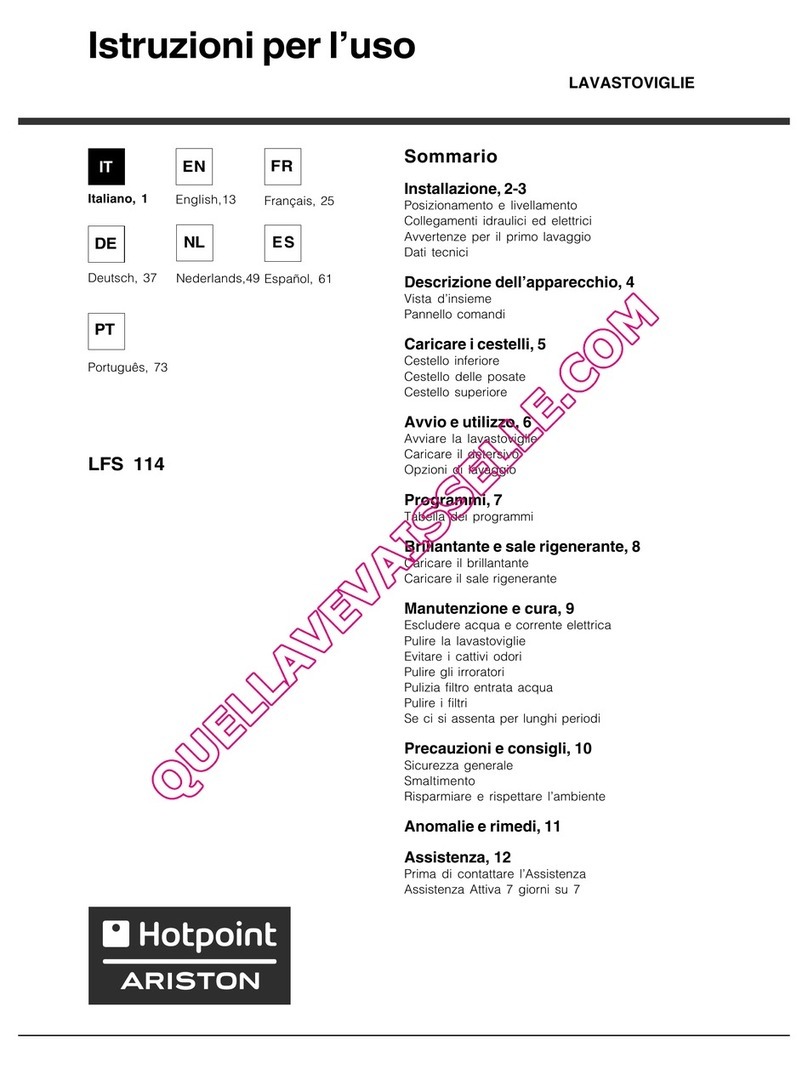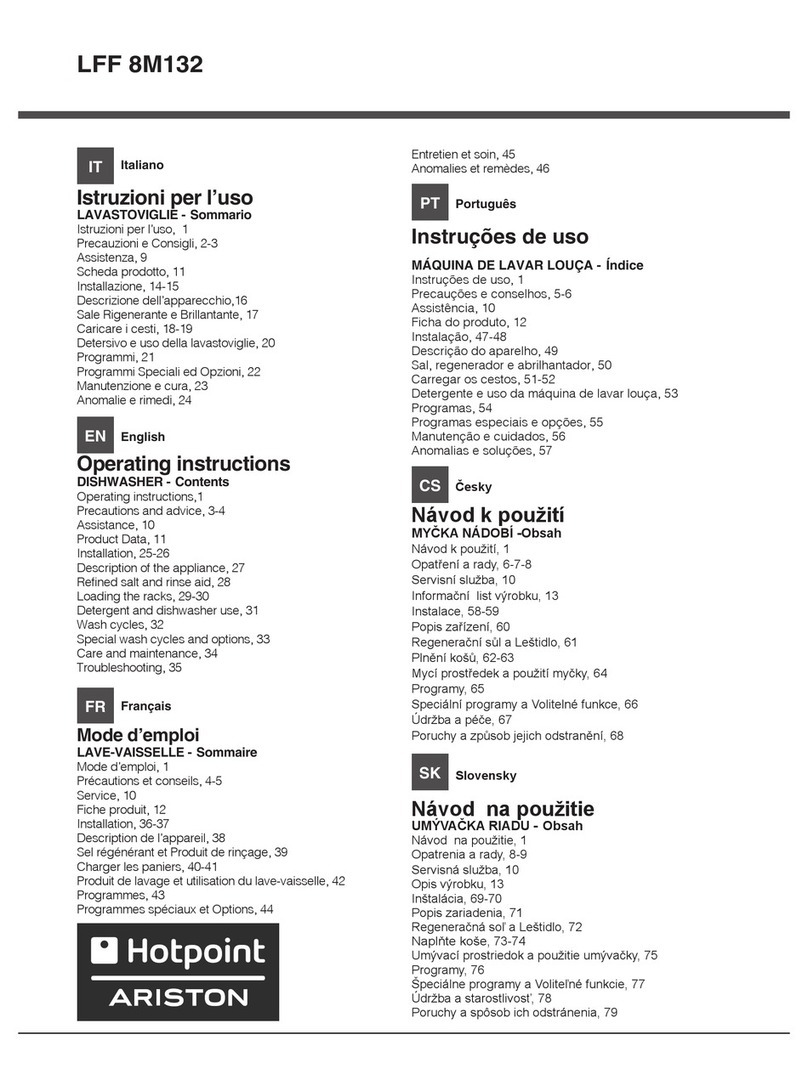8
IT
Brillantanteesale
rigenerante
G
F
Usare solo prodotti specifici per lavastoviglie.
Non usare sale alimentare o industriale nè
detersivi per il lavaggio a mano.
Seguire le indicazioni riportate sulla
confezione.
Se si usa un prodotto multifunzione, non è necessario
aggiungere brillantante, si consiglia invece di aggiungere
sale, specie se l’acqua è dura o molto dura. Seguire le
indicazioni riportate sulla confezione.
Non aggiungendo né sale né brillantante è
normale che le spie MANCANZA SALE*e
MANCANZA BRILLANTANTE*rimangano accese.
Caricare il brillantante
Il brillantante facilita l’asciugatura delle stoviglie facendo
scivolare l’acqua dalla superficie, così che non rimangano
striature o macchie.
Il serbatoio del brillantante va riempito:
• quando sul pannello si accende la spia MANCANZA
BRILLANTANTE*;1. Aprire il serbatoio ruotando il
tappo (G) in senso antiorario.
2. Versare il brillantante
evitando che fuoriesca. Se
accade, pulire subito con un
panno asciutto.
3. Riavvitare il tappo.
Non versare MAI il brillantante
direttamente all’interno della
vasca.
Regolare la dose di brillantante
Se non si è soddisfatti del risultato dell’asciugatura, è
possibile regolare la dose di brillantante. Con un cacciavite
girare il regolatore (F) scegliendo tra 6 posizioni (la
regolazione di fabbrica è sul 4):
• se sulle stoviglie ci sono striature, girare verso i numeri
bassi (1-3).
• se ci sono gocce d’acqua o macchie di calcare girare
verso i numeri alti (4-6).
Impostazione durezza dell’acqua
Ogni lavastoviglie è corredata di un dolcificatore dell’acqua
che, utilizzando del sale rigenerante specifico per
lavastoviglie, fornisce acqua priva di calcare per il lavaggio
delle stoviglie.
Questa lavastoviglie, consente una regolazione che riduce
l’inquinamento ed ottimizza le prestazioni di lavaggio in
funzione della durezza dell’acqua. Il dato è reperibile
presso l’Ente erogatore dell’acqua potabile.
- Aprire la porta ed accendere la macchina premendo il
tasto ON/OFF.
- Premere il tasto P per circa 5 secondi; si sentono due bip
brevi e lampeggia lentamente sul pannello di controllo la
spia relativa al grado di durezza impostato (Il
decalcificatore è impostato di fabbrica sul n° 3).
- Premere il tasto P in successione fino al raggiungimento
della durezza desiderata (1-2-3-4-5*
Vedi tabella durezza
acqua
).
Es. durezza 1 (spia 1° progr. lampeggia);
durezza 2 (spia 1° progr. accesa, spia 2° progr.
lampeggia);
durezza 3 (spia 1° e 2° progr. accese, spia 3° progr.
lampeggia ecc... ecc.)
- Per uscire dalla funzione attendere alcuni secondi o premere
un tasto delle opzioni*ospegnere la macchina con iltasto
ON/OFF.
Sesi utilizzanole pastigliemultifunzione,riempire comunqueil
serbatoiodel sale.
(°dH = durezza in gradi tedeschi - °fH = durezza in gradi
francesi - mmol/l = millimol/litro)
Caricare il sale rigenerante
Per avere buoni risultati di lavaggio è indispensabile
verificare che il serbatoio del sale non sia mai vuoto. Il sale
rigenerante elimina il calcare dall’acqua, evitando che si
depositi sulle stoviglie. Il serbatoio del sale è posto nella
parte inferiore della lavastoviglie (
vedi Descrizione
) e va
riempito:
• quando il galleggiante verde*non è visibile osservando il
tappo del sale;
• quando sul pannello si accende la spia MANCANZA
SALE*;1. Estrarre il cesto inferiore e svitare il tappo
delserbatoio insenso antiorario.
2.Solo peril primoutilizzo: riempireil
serbatoiodi acqua fino al bordo.
3.Posizionare l’imbuto*(
vedifigura
)e
riempire il serbatoio di sale fino al bordo (circa 1 kg); è
normaleche trabocchiun po’d’acqua.
4.Togliere l’imbuto*,eliminarei residuidi sale dall’imbocco;
sciacquareil tapposotto l’acquacorrente primadi avvitarlo,
disponendoloa testain giùe facendodefluire l’acquadalle
quattro fessure disposte a stella nella parte inferiore del tappo.
(tappocon galleggiante verde*)
E’ consigliabile effettuare questa operazione ad ogni
caricamento del sale.
Chiuderebene iltappo, affinchénel serbatoionon entri
detersivodurante il lavaggio(potrebbe danneggiarsi
irrimediabilmenteil dolcificatore).
Quando si rende necessario, caricare il sale prima di un
ciclodi lavaggioin mododa eliminarelasoluzione salina
traboccatadal contenitoredel sale.
*Presente solo su alcuni modelli.
Tabella Durezze Acqua Autonomia media**
contenitore sale
livello °dH °fH mmol/l mesi
1 0 - 6 0 - 10 0 - 1 7 mesi
2 6 - 11 11 - 20 1,1 - 2 5 mesi
3 12 - 17 21 - 30 2,1 - 3 3 mesi
4 17 - 34 31 - 60 3,1 - 6 2 mesi
5*
34 - 50
61 - 90
6,1 - 9
2/3 settimane
Da 0°f a 10°f si consiglia di non utilizzare sale.
* con impostazione 5 la durata può prolungarsi.
** con 1 lavaggio al giorno

